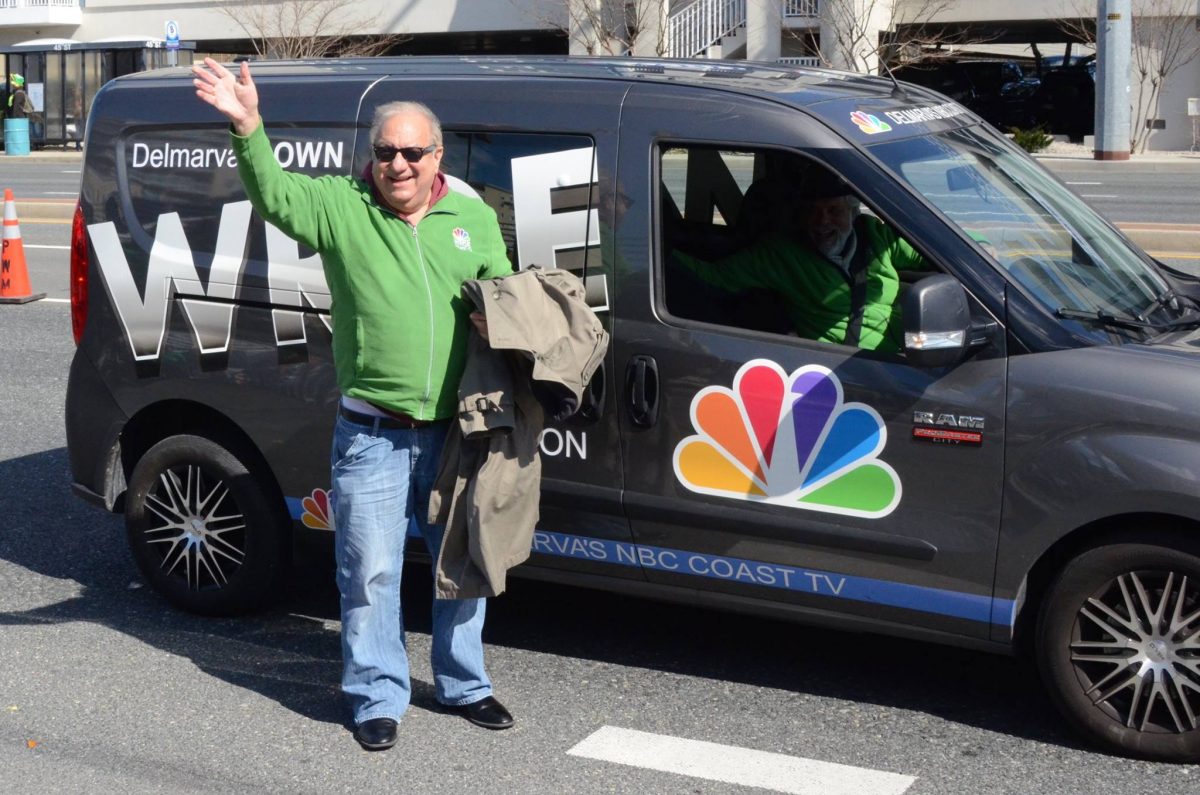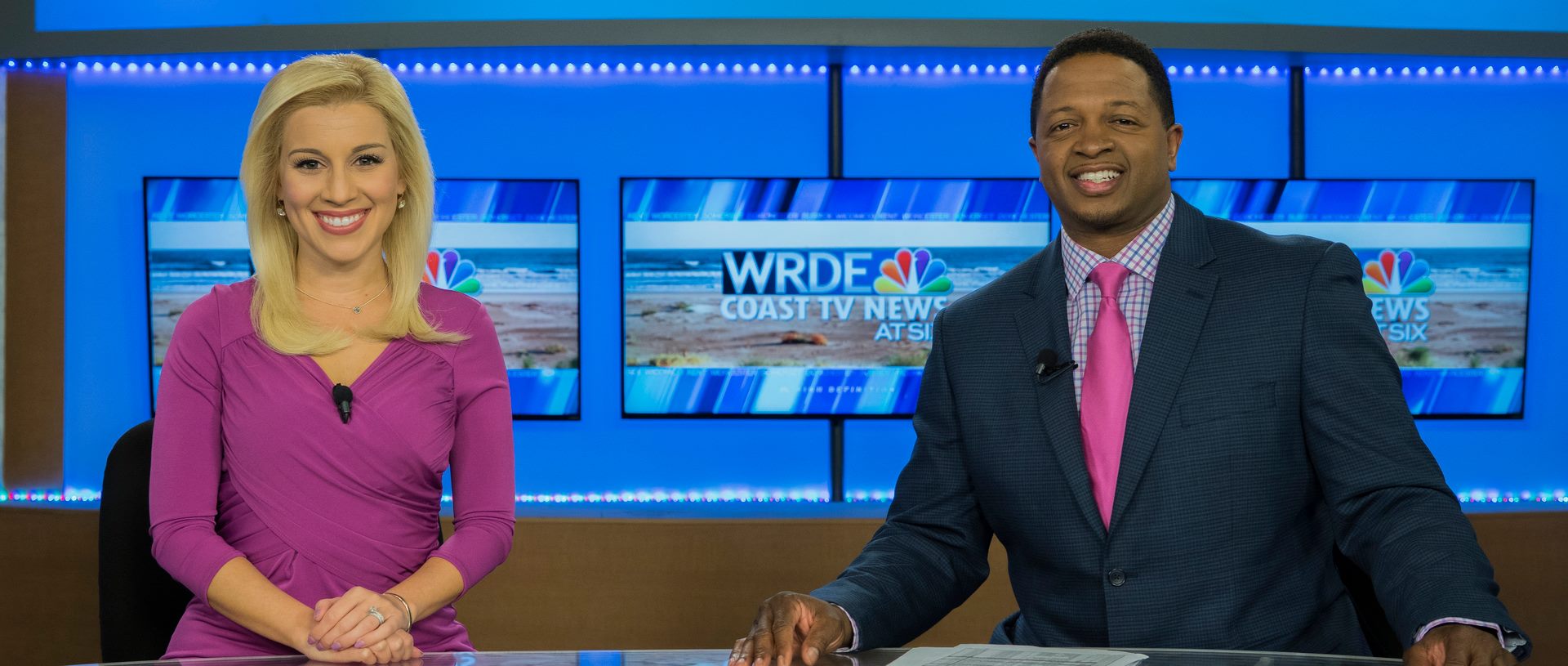How remote anchors are helping local TV news stations cut costs
High staffing and production costs are just two of the challenges TV newsrooms face right now. Some stations, though, are getting creative with the way they address those issues and have found a way to cut expenses by outsourcing aspects of their newscasts. Vice News recently reported on how some stations are subscribing to the app Fresco News – dubbed the “Uber for video news” – that pays non-journalists to shoot video for a news outlet. Others are trying out remote anchors.
Remote anchors are exactly what they sound like: talking heads broadcasting from a studio that is not the station’s – sometimes more than 1,000 miles away. WRDE in Rehoboth Beach, Delaware and KLAX in Alexandria, Louisiana are two of the eight clients for which Arkansas-based Gateway Media has been producing newscasts. Gateways managing partner Jeff Lyle claims their business is especially beneficial “to start-up and struggling stations.”
It’s a model that’s paying dividends. Recently, Canada’s Global News network received an Edward R. Murrow Award for Excellence in Innovation for their Multi-Market Content production model which, as it turned out, relied on newscasts anchored remotely. Global News produces 11 pm newscasts for eight of the Canadian stations it operates.
Economies of scale
One of the strongest arguments for outsourcing the work of TV news anchors is that it can save stations money. The salaries for anchors and staff plus overhead for studios, control rooms and high-end cameras are some of the most expensive things a station spends on. Outsourcing services like Gateway, or basing all the production in one place like Global News does in Toronto, can help defray those costs.
“Typical news operations can save up to 50 percent of their news budget,” says Gateway’s Lyle. “The cost of anchors, production and space get shared across many markets, which is it is very economical.”
New stations can benefit a lot from these economies of scale, Lyle says, because they need to invest less upfront to get their newsroom running. “We get that opportunity to walk into a market and make it economical for them, but also try to give them a new face and a new look in the community, which hopefully will be better than what they had been presenting,” Lyle explains.
Small operations such as WRDE – which has 10 people, six of whom are reporters – would be a lot smaller if they had to pay for a regular studio newscast production, says news director Bob Backman.

A focus on on-the-ground journalism
Backman started WRDE in 2014 and says that he has used Gateway’s anchors from day one. For him, it was a question of financial allocation. Reporters and producers, in his opinion, are more valuable than “someone who comes in and reads the news and does nothing else.”
To Backman, this remote anchor model allowed the station to differentiate from his competitors, which at the time he entered the market, was dominated by ABC and CBS affiliates.
“It allows us to focus on putting the reporters on the ground and cover the thing that matter in this community,” he says. “I would rather spend on reporters and producers who are covering what is happening, the events, people doing good in this community.”
Lyle agrees. “They get to concentrate on the production, the local producing aspect, and that goes a long way.” he says.
The anchor is not dead
So does outsourcing TV news production mean jobs will be lost? Quite the opposite, says Anne Imanuel, one of the anchors employed by Gateway in Little Rock and the face of WRDE’s newscasts. “We are creating jobs at markets that would not be able to have a news operation otherwise,” she recently told the website TVSpy.
Backman and Lyle are confident that remote anchors can do just as good of a job as local anchors. And if a situation arises where they need to be on the ground, says Backman, they’re only a plane ride away. “When we have something really important happening right here, a parade or something like that, we bring in the anchors and they can see and talk to the public, get to know the people on the ground, hear about what is going on in the community.” says Backman.
Lyle is certain his anchors can stay on top of what is happening in the communities they serve, even if they are as far as 1,500 miles from where the news is breaking – as is the case with his client in St. George, Utah.
“They are as tight as any anchor, except they get a couple of markets,” says Lyle.
Cover photo: Anne Imanuel and Mark Edwards, Gateway employees and WRDE’s anchors. Credit: WRDE.
- SXSW: ‘Excel is okay’ and other tweet-size insights for data journalists and news nerds - March 17, 2018
- NICAR: Data stories from last year that you could be doing in your newsroom - March 13, 2018
- How to scrape Reddit with Python - March 12, 2018





